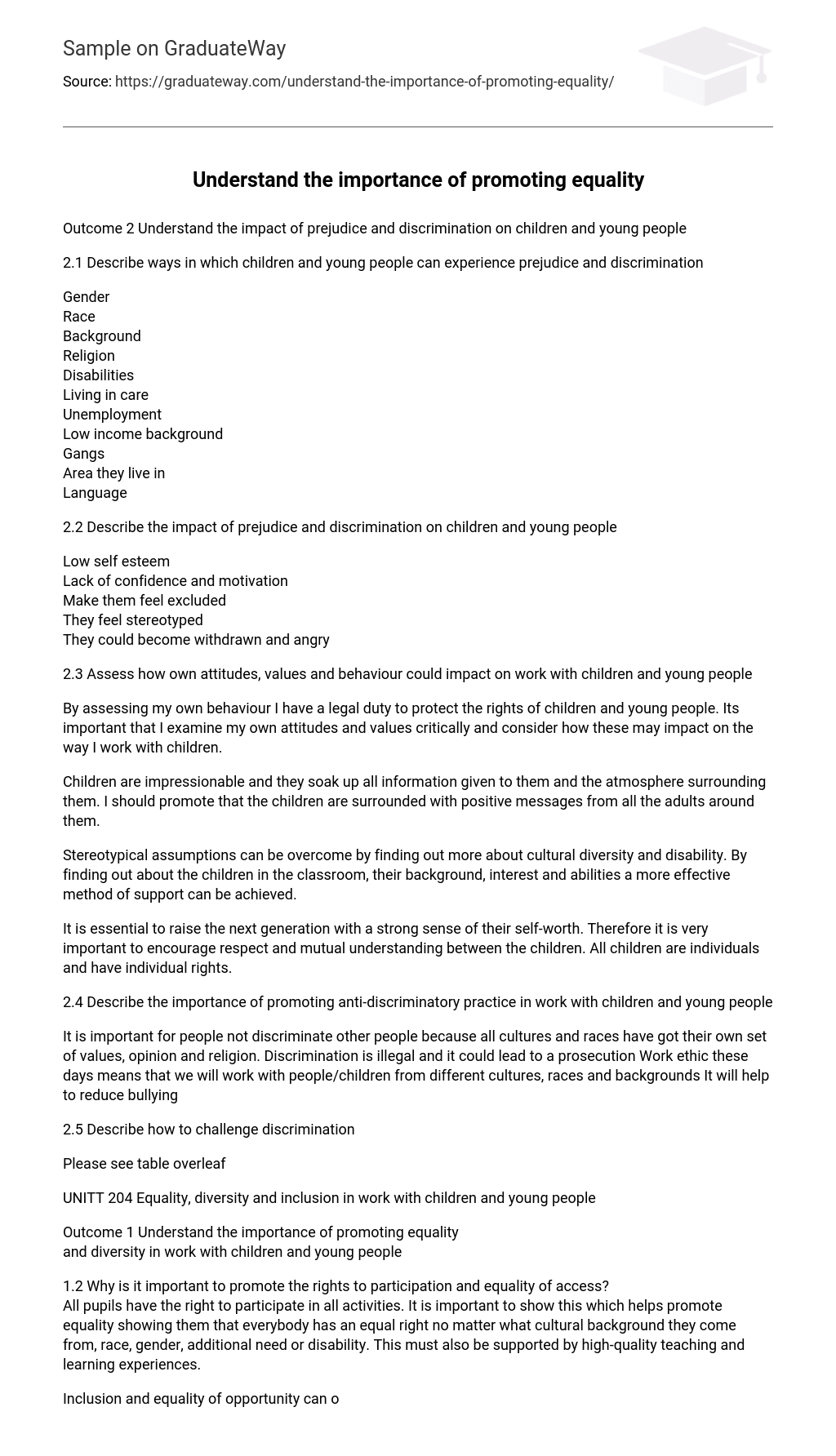Describe ways in which children and young people can experience prejudice and discrimination
- Gender
- Race
- Background
- Religion
- Disabilities
- Living in care
- Unemployment
- Low income background
- Gangs
- Area they live in
- Language
Describe the impact of prejudice and discrimination on children and young people
- Low self esteem
- Lack of confidence and motivation
- Make them feel excluded
- They feel stereotyped
- They could become withdrawn and angry
Assess how own attitudes, values and behaviour could impact on work with children and young people
By assessing my own behaviour I have a legal duty to protect the rights of children and young people. Its important that I examine my own attitudes and values critically and consider how these may impact on the way I work with children.
Children are impressionable and they soak up all information given to them and the atmosphere surrounding them. I should promote that the children are surrounded with positive messages from all the adults around them.
Stereotypical assumptions can be overcome by finding out more about cultural diversity and disability. By finding out about the children in the classroom, their background, interest and abilities a more effective method of support can be achieved.
It is essential to raise the next generation with a strong sense of their self-worth. Therefore it is very important to encourage respect and mutual understanding between the children. All children are individuals and have individual rights.
Describe the importance of promoting anti-discriminatory practice in work with children and young people
It is important for people not discriminate other people because all cultures and races have got their own set of values, opinion and religion. Discrimination is illegal and it could lead to a prosecution Work ethic these days means that we will work with people/children from different cultures, races and backgrounds It will help to reduce bullying
Why is it important to promote the rights to participation and equality of access?
All pupils have the right to participate in all activities. It is important to show this which helps promote equality showing them that everybody has an equal right no matter what cultural background they come from, race, gender, additional need or disability. This must also be supported by high-quality teaching and learning experiences.
Inclusion and equality of opportunity can only be successful if they help to raise achievement and to promote self-identity and good relationships through the participation of all children and young people.
Culture can cut across nationality and religions. It is what gives groups of people in our society their identity. It also refers to the way groups live, for example, shared customs, thoughts, arts, language and social activity. Recognising and promoting the cultural diversity of individuals and groups within the school will enrich learning and promote the knowledge and understanding of all pupils.





